-
Genealogy & Names
-
Tourist Information
-
Culture & Reference
CHRISTMAS GIFTS FROM IRELAND - VISIT IrishNation.com Only -4 Days To Go! |
|
Saint Patrick's Day 
Saint Patrick's Day image from Free Photos Of Ireland |

|
|

| Popular Articles from Recent Newsletters: |


|
With the Brexit deadline fast approaching there are further votes to be held in the British House of Commons to determine just exactly how the UK will leave the European Union. Calls for a re-run of the 2016 Referendum that narrowly put Britain on this exit path have been resisted by those most in favor of Brexit. It is possible that the prospect of a delayed Brexit or even of no Brexit altogether may induce some of the more militant 'Brexiteers' to soften their stance, simply to get Brexit over the finish line. It certainly looks as if this is the strategy of the British Prime Minister Theresa May, who may be gambling that her negotiated deal will finally be accepted by her Parliament, and especially so as the deadline draws closer. Risky stuff. |

|
It will come as no surprise to locals that Dublin is now among the most expensive cities in Europe in order to rent a place to stay. A survey from ECA International has found that an unfurnished, mid-range, 3-bedroom apartment in Dublin city now costs as much as €3,406 per month (approx US$3850) . London remains the most expensive city to rent in the EU, with Dublin jumping from 61st to 26th place in the international league table, where Hong Kong and New York continue to top the standings. |

|
A report in 'The Lancet' publication has revealed that Irish teenagers rank high in the league table of those countries with problem youth drinkers. Only Denmark and Finland were ahead of Ireland in terms of adolescent (aged 15 to 19) drinking, followed by New Zealand. With the improvement in the Irish economy after the economic crash there has been a 21.4% increase in spirit consumption between 2014-2018. The successful marketing of specialist gins and cocktails has contributed to the increase. |

|
FIND YOUR NAME IN OUR GALLERY OF IRISH COATS OF ARMS

|

|
SAINT PATRICK'S DAY PARADE Saint Patrick's Day is unique in that it is celebrated worldwide. It is most unusual that a country has such an international celebration and is really evidence of the generational effects of emigration that has afflicted Ireland for centuries. 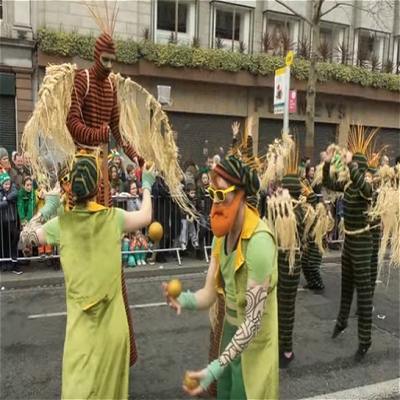
View a Video of the Dublin St. Patrick's Day Parade in action. After the 1845 to 1849 Irish Famine emigration soared with as many as a million native Irish leaving their homes in the decades after the famine to settle in places like Boston, New York, Newfoundland, Perth, Sydney and beyond. The US Census Bureau now reports that 34 Million US Citizens claim Irish descent. Most emigrants like to commemorate their heritage and thus the Saint Patrick's Day Parade came into being. 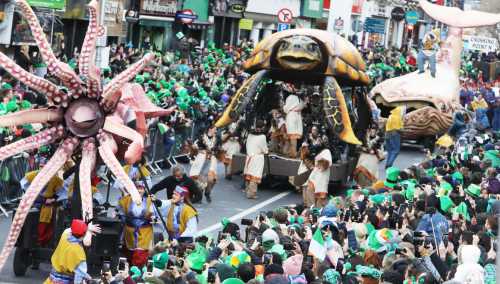
The earliest record of a Saint Patrick's Day Parade was in the year 1762 when Irish soldiers serving in the British Army held a Parade in New York City. Earlier records suggest that the day was celebrated by the Irish in Ireland as early as the ninth and tenth centuries. Again, this was a very difficult time in Irish history with Viking raiders terrorizing the native Gaelic population. It is thus no surprise then that in times of strife the local population would turn to religion and to a commemoration of their own heritage and individuality - a practice that has been repeated by populations of troubled places since the dawn of time. The New York Parade is now the longest running civilian Parade in the world with as many as three Million spectators watching the Parade of over 150,000 participants. 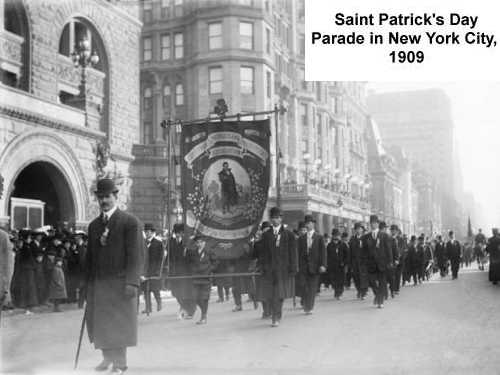
The first official Parade in Ireland was in 1931. The 1901 law that copper-fastened March 17th as an Irish national holiday was later amended to insist that public houses close down on the day. This restriction was later lifted in the 1970's. In the mid 1990's the Irish Government really started to promote the event when it changed from a single day's Parade into a 5-day festival attracting as many as a million visitors into the country. Parades are now held in just about every major city in the world with the biggest in several US cities reaching epic proportions. THE WEARING OF THE GREEN The tradition of wearing Shamrock to celebrate Saint Patrick seems to date from the seventeenth or eighteenth century. This was a very turbulent time in Irish history. The suppression of the Gaelic way of life by the ruling British invaders resulted in many aspects of the Catholic religion in Ireland being forced underground. Strict laws were enforced which prevented the Catholic population from attending schools so 'hedge-schools' were operated in secret. 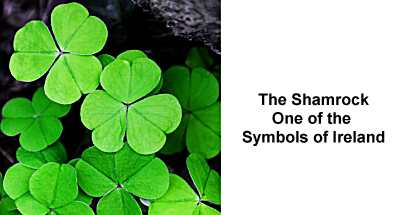
These were schools run outdoors in secluded places (sometimes literally 'under a hedge!). The teaching of religion was also forbidden so it is only to be expected that teachers would use naturally available resources to inform their pupils. Thus the Shamrock plant was used to illustrate the message of the Christian Holy Trinity. Saint Patrick was credited with using the Shamrock in such a manner so the wearing of the Shamrock by the oppressed Catholic population became a means of demonstrating their defiance to the ruling British class. It also imbued a sense of kinship among the native Gaelic people, differentiating them from their oppressors. Wearing a clump of Shamrock is now a firmly established tradition throughout the world to celebrate not just Saint Patrick but Ireland itself. The Shamrock symbol is widely used by businesses seeking to associate with Ireland and, along with the Harp, is perhaps the single most recognizable symbol of Ireland. It is a shame though that the Shamrock is not a blue plant as the color originally associated with Saint Patrick was blue! GREENING OF BUILDINGS AND RIVERS The use of the color green reached new heights (or plunged new depths!) when in 1962 the city of Chicago decided to dye part of the Chicago River green. Since then the campaign to have just about every possible landmark turned green for the day has taken off in earnest. 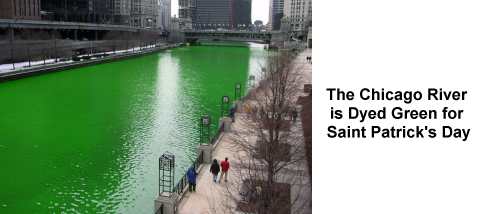
In recent years this has included the Irish Parliament building, the Sydney Opera House, the Empire State Building, Niagara Falls and even the Pyramids of Giza in Egypt! A PINT OF PLAIN The Irish association with drinking is well known and not always positive. Fortunately there are plenty of examples of the appropriate use of alcohol and Saint Patrick's Day is one of them. It is a widely held tradition in Ireland that beer or whiskey can be taken on Saint Patrick's Day although native Irish pub-goers can only look on aghast as visitors top the heads of their creamy pint of Guinness with a green Shamrock. Sacrilege! It is estimated that as many as 13 Million pints of Guinness are consumed on Saint Patrick's Day, up from the usual 5.5 Million per day! 
DRESSING UP The tradition of dressing up in Irish outfits is not just confined to participants in Parades. Jovial creatures of Irish origin the world over use the opportunity of Saint Patrick's Day to dress up as Leprechaun or even as Saint Patrick himself. Kids love to wear the big green, white and orange hats and receive sweets thrown to them by similarly clad operators of the various Parade floats. THE SAINT PATRICK'S DAY DINNER Corned beef and cabbage is as traditional and Irish meal as you will ever find and it is often hauled out for Saint Patrick's Day. Traditional Irish music in the background and a family gathering are other Irish Saint Patrick's Day traditions that have been going on for centuries. |


find out more |

|
The Patron Saint of Ireland was born into either a Scottish or English family in the fourth century. He was captured as a teenager by Niall of the Nine Hostages who was to become a King of all Ireland. He was sold into slavery in Ireland and put to work as a shepherd. He worked in terrible conditions for six years drawing comfort in the Christian faith that so many of his people had abandoned under Roman rule. 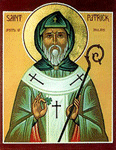
Patrick had a dream that encouraged him to flee his captivity and to head South where a ship was to be waiting for him. He travelled over 200 miles from his Northern captivity to Wexford town where, sure enough, a ship was waiting to enable his escape. Upon arrival in England he was captured by brigands and returned to slavery. He escaped after two months and spent the next seven years travelling Europe seeking his destiny. During this time he furthered his education and studied Christianity in the Lerin Monastery in France. He returned to England as a priest. Again a dream greatly influenced him when he became convinced that the Irish people were calling out to him to return to the land of his servitude. He went to the Monastery in Auxerre where it was decided that a mission should be sent to Ireland. Patrick was not selected for this task to his great disappointment. The monk that was selected was called Paladius, but he died before he could reach Ireland and a second mission was decided upon. Patrick was made a Bishop by Pope Celestine in the year 432 and, together with a small band of followers, travelled to Ireland to commence the conversion. Patrick confronted the most powerful man in Ireland, Laoghaire, The High King of Tara, as he knew that if he could gain his support that he would be safe to spread the word throughout Ireland. To get his attention Patrick and his followers lit a huge fire to mark the commencement of Spring. Tradition had it that no fire was to be lit until the Kings fire was complete, but Patrick defied this rule and courted the confrontation with the King. The King rushed into action and travelled with the intention of making war on the holy delegation. Patrick calmed the King and with quiet composure impressed the King that he had no other intention than that of spreading the word of the Gospel. The King accepted the missionary, much to the dismay of the Druids who feared for their own power and position in the face of this new threat. They commanded that he make snow fall. Patrick declined to do so stating that this was the work of God. Immediately it began to snow, only stopping when Patrick blessed himself. Still trying to convince the King of his religion Patrick grasped at some Shamrock growing on the ground. He explained that there was but one stem on the plant, but three branches of the leaf, representing the Blessed Trinity. The King was impressed with his sincerity and granted him permission to spread the word of his faith, although he did not convert to Christianity himself. Patrick and his followers were free to spread their faith throughout Ireland and did so to great effect. He drove paganism (symbolised by the snake) from the lands of Eireann. Patrick was tempted by the Devil whilst on a pilgrimage at Croagh Patrick. For his refusal to be tempted, God rewarded him with a wish. Patrick asked that the Irish be spared the horror of Judgement Day and that he himself be allowed to judge his flock. Thus, the legend that Ireland will disappear under a sea of water seven years before the final judgement, was born. Patrick died on March 17th in the year 461 at the age of 76. It is not known for sure where his remains were laid although Downpatrick in County Down in the North of Ireland is thought to be his final resting place. His influence is still felt to this day as Nations the world over commemorate him on March 17th of every year. |

|
||||

|
FREE IRISH SONGS EBOOK Lyrics and Music to 74 of Ireland's most popular songs. Go Here IRISH LANGUAGE PHRASES Hundreds of Gaelic Phrases with Pronunciation Guide. Go Here FREE IRISH RECIPES EBOOK 25 of the very best Irish Recipes for you to mess up. Go Here SAINT PATRICK'S DAY TRADITIONS Wear some green, march in a parade, maybe have a pint! Go Here KIDS GAMES: LEARN ABOUT SAINT PATRICK AND IRELAND Simple coloring sheets and easy quizzes for kids. Go Here READ ABOUT THE LIFE OF SAINT PATRICK He was British, we know, enough already. Go Here FREE ST. PATRICK SCREENSAVER Download the Free Saint Patrick's Day Screensaver. Go Here VIEW YOUR IRISH FAMILY CREST 1000 Images and Name Histories Go Here |

|
A year after her husband's death in 1927 it became clear that the widow was on the lookout. Three serious suitors were quickly into the ring, after all her late husband, Kieran, had left her with a snug twenty acres and a house built into the shelter of a cut-away hill. Thatch would last twice as long in this sheltered position. 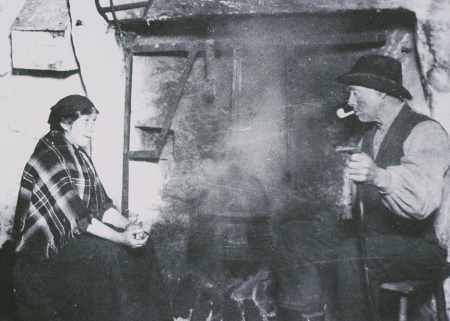
Of course one couldn't show ones hand too soon as failure with one woman would hinder ones chances in future. Funny, the way everyone fancied the same woman while others could get no man at all. Then again twenty acres had it's own beauty. Rambling in at night for a chat was the most widespread leisure activity at the time and a man with intentions could call as a rambler without totally revealing those intentions. After an hour alone with the widow a man might broach the subject. Paddy Ban (fair), John Dearg (red) and Tricky Dubh (black) all had the same idea. That's why all three spent every night rambling in the widow's house this sherraft. Sherraft was the period between Christmas and Lent and was the time for weddings. While their nicknames once indicated their hair colour, now in their fourth decade there was little difference between them. As none had farms of their own this might well be their last throw of the romantic dice. Paddy Ban was a laidback dreamy romantic chap whom a woman could love but his farming abilities were suspect. His experience with the opposite sex was all in his head. John Dearg was a go-getter who would skin a flea and skin anybody else who got in his way. Some people called him 'John skin the goat'. The woman who got him would never be short of a few bob even if she were never at liberty to spend it. His only previous romantic encounter had ended abruptly when it transpired that the object of his affections did not own the uncles farm after all. Tricky Dubh who was from a wealthier family was gracious and charming but was something of a black sheep who had earned his nickname. His romantic encounters were many and varied and indeed there were rumours of a scandal or two. As Ash Wednesday approached all became more desperate and competition increased at the nightly meetings. A four-way conversation is not an ideal forum for suitors, especially if there is only one lady. A man has to measure his words so as to belittle the others without appearing vindictive. It's not easy to get to portray one's assets, one's physical powers, one's charms, one's charisma, or one's manhood while in the presence of two jealous rivals. All comments are likely to be misconstrued, added to, laughed at, sneered at or generally belittled. Then, on the Friday before Ash Wednesday the morning was the wettest for many years. If a man got very wet out looking for a stray calf wouldn't it be reasonable for him to seek temporary shelter in the house of an acquaintance and if that acquaintance happened to be the widow with whom a man wanted to have a serious private conversation so much the better. Whether it's that great minds think alike or that fools seldom differ I could not say but all three suitors had the same idea around daylight on the morning in question. John Dearg and Tricky Dubh jumped out of bed and prepared to look the part. They would need to walk in the rain for half an hour to look suitably wet. John Dearg, not to be wasteful, went to the well for water making sure to splash himself so as to look wet. Tricky Dubh herded the widow's livestock at the back of her house. Paddy Ban stayed in bed for a while to think. If he had this great idea maybe the others had it too. He got dressed, shaved and went as far as the ivy clad tree a hundred yards north of the widow's house. He would watch from there for a while. As Tricky Dubh was approaching the house from the back he spotted John Dearg coming up the south road. He hid behind the haycock where the goat was suckling her two kids. About the time John Dearg was reaching the front door, he took the ladder from the haycock, placed it against the low thatched roof, grabbed a kid and climbed up to the chimney. Up the wide chimney came the voice of John Dearg calling, 'God save all here', just then he dropped the kid down the chimney. The frightened beast upturned the kettle off the crane, the toast off the tongs, put the fire flying round the kitchen, and broke two willow pattern plates from the dresser before escaping out the door. In her fright and confusion the widow thought that John Dearg had brought the goat. Where else could it have come from? Picking up the twig she attacked John Dearg physically and verbally, raining blows on him while calling him obscene names and ordering him out of her house. Not knowing where the kid came from, he was shocked by the whole episode and ran for his life. As he struggled home through the rain, his heart and spirit broken he muttered to himself, what was the weird woman doing with the goat? Were there things about women and goats he did not know? Now he would never know. If that's the sort of them then he didn't want to know. They could all go to hell and the sooner the better. 'What on earth happened here?' said Tricky Dubh as he watched the widow picking up the bits of willow pattern plates? 'They were my grandmother's,' she wailed. 'And look at the fire all over the floor and my toast, that lunatic John Dearg brought a goat into the house and a mad goat at that.' 'A goat is it? The sign of the devil, you'll have to get the house blessed, I always had my doubts about poor John, and you're lucky to be rid of him. Here let me help you tidy up.' 'Why did you throw the kid goat down the chimney?' That's what Paddy Ban said as he came in. 'What are you talking about?' said Tricky Dubh. 'I saw you throwing the goat down the chimney.' The widow went for the twig again, this time with more ferocity, indeed Tricky Dubh was lucky to escape with his life. After Tricky Dubh left Paddy Ban had the field to himself. Their descendants are still around, no longer Ban or dreamy as the widow's dusky beauty and spirited personality changed all that. Pat Watson 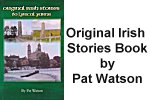
'Tricky Dubh' is one of sixty lyrical yarns from 'Original Irish Stories' by Pat Watson, Creagh, Bealnamulla, Athlone, Ireland. Visit: https://goo.gl/FDp48v or you can email the author here: pjwatson77@gmail.com |

View the Archive of Irish Phrases here: http://www.ireland-information.com/irishphrases.htm |

|
The winner was: mbarry@nctv.com who will receive the following: A Single Family Crest Print (usually US$24.99) Send us an email to claim your print, and well done! Remember that all subscribers to this newsletter are automatically entered into the competition every time. I hope that you have enjoyed this issue! 
by Michael Green, Editor, The Information about Ireland Site. http://www.ireland-information.com Contact us (C) Copyright - The Information about Ireland Site, 2019. 17 Páirc Ghrainbhil, Carraig Dubh, Contae Baile átha Cliath, Ireland Tel: 353 1 2893860 |

|
MARVELOUS GIFTS FOR ANY OCCASION FREE DELIVERY TO YOUR DOOR 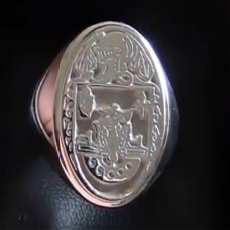
BIG REDUCTIONS! Stunning Family Crest Signet and Seal Rings 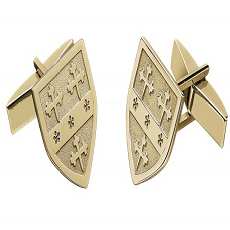
DISCOUNTED FOR A LIMITED TIME Elegant Cufflinks 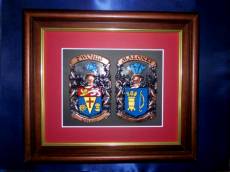
Incredible Family Crest Plaques Made in Ireland 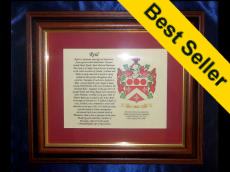
Superior Framed Family Crest Parchments 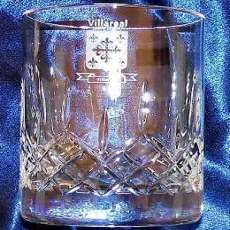
Gorgeous Glistening Galway Crystal 'Your-Name' Old Irish Sign NEW DESIGNS! 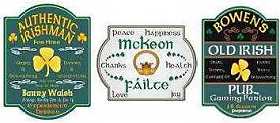
From US$34.99 - Free Delivery 
New Designs available on our Coffee Mugs 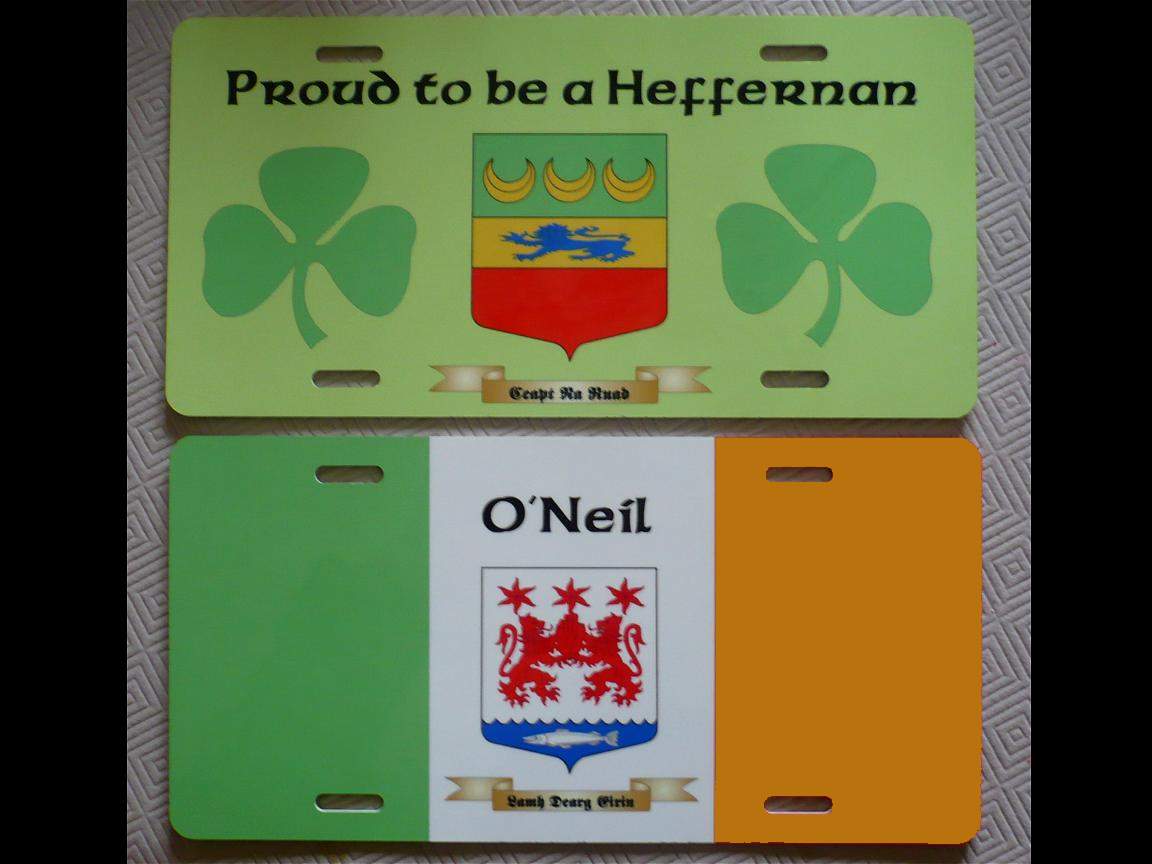
Personalized Licence Plate 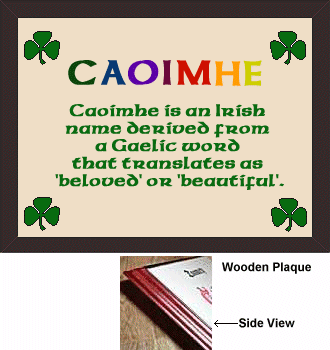
Personalized First Name Plaque. Great for Kids! 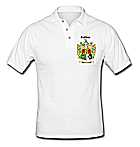
'Your-Name' Polo & Tee Shirts 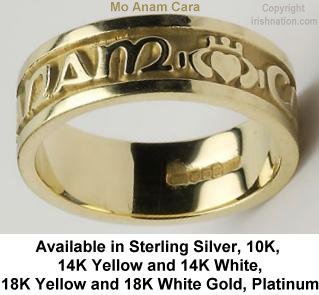
From US$69 Delivered BIG REDUCTIONS! Stunning Engraved Rings from Ireland with Irish Language Phrases. Mo Anam Cara: My Soul Mate Gra Dilseacht Cairdeas: Love, Loyalty, Friendship Gra Go Deo: Love Forever Gra Geal Mo Chroi: Bright Love of my Heart SEE MORE GREAT OFFERS AND DISCOUNTS AT: IRISHNATION.COM FREE DELIVERY FOR A LIMITED TIME! |
